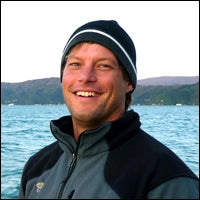ECU professor collaborates on research to predict sea-level rise, flooding from hurricanes
East Carolina University researcher Dr. Reide Corbett will join a team of colleagues studying sea-level rise and flooding from hurricanes along the Atlantic and Gulf coasts, thanks to a 3-year, $1.5 million grant from the National Oceanic and Atmospheric Administration.
Corbett is a professor in the Department of Geological Sciences and a research scientist in ECU’s Institute for Coastal Science and Policy. He will work closely with the project’s lead investigator, Dr. Benjamin Horton, associate professor in the Department of Earth and Environmental Science at the University of Pennsylvania.
“Coastal North Carolina may see significant changes in the future due to rising seas and continued tropical cyclone activity,” Corbett said.
“To effectively adapt to a changing coast, we need to better understand the relationship between climate and sea level variability,” he said. “That is one of the main objectives of this study – using the past as a key to the future.”
The project draws upon research Horton, Corbett and other collaborators from ECU, Penn State, The Woods Hole Oceanographic Institution, Finland’s Aalto University School of Engineering and Germany’s Potsdam Institute for Climate Impact Research have published during the last several years. The culmination of this work produced a landmark study that resulted in the first reconstruction of sea-level rise in North Carolina over the past 2000 years.
“The foundation of current models for sea-level projections is data from the 20th century, but we’ve started to be able to push further back in time,” Horton said. “This allows us to have a better understanding of the past relationship between climate and sea level and to make better predictions about the future.”
The team will combine sea-level rise scenarios with state-of-the-science hurricane and storm surge modeling at six study sites from Florida to Massachusetts. This will enable them to map coastal flooding for the current climate and the best- and worst-case climate scenarios of the 21st century. These scenarios will be integrated into strategic policy documents to make technical results more accessible for adaptive coastal decision-making.
This spring, the researchers will begin to meet with coastal managers to get input about how such sea-level and flooding projections might best be put to use. In the wake of Hurricane Irene, Corbett said he believes that the public is more aware of the hazards along the coast and is likely interested in future flooding scenarios.
“It’s important that we present our scientific results and products to local communities,” Corbett said. “We will be providing information and products that will aid in future planning.”
For additional information, contact Corbett at 252-328-1367 or corbettd@ecu.edu.
###
